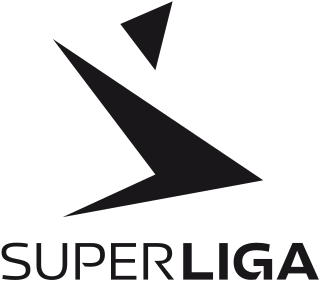Stævnet or Copenhagen XI were a Danish association football representative team which had its prime before 1970, however it was active until 1994. Stævnet participated in the Inter-Cities Fairs Cup, the precursor of today's UEFA Cup, in 1955–58, 1958–60, 1961–62, 1962–63 and 1963–64.

DBU Copenhagen is the local governing body for association football and futsal in Copenhagen, Denmark. They are responsible for the governance and development of men's and women's football at all levels in the region. DBU Copenhagen is a member of the Union of Local Football Associations in Denmark (FLU) under the Danish Football Association (DBU) and National Olympic Committee and Sports Confederation of Denmark (DIF). The headquarters is at the Svanemølleanlægget at Østerbro after previously being located the national football stadium. Clubs situated in the municipalities of Copenhagen, Frederiksberg, Gentofte, Tårnby and Dragør can be accepted as members of DBU Copenhagen. Due to historical reasons a number of older clubs from other municipalities are also member of the association. In 2015 the association consisted of 150 clubs and 39,160 members with the oldest Danish association football club Kjøbenhavns Boldklub (KB) being the largest club membership-wise only surpassed by Brøndbyernes Idrætsforening on a national level.
Statistics of Danish National Football Tournament in the 1916/1917 season.
Statistics of Danish 1st Division in the 1917/1918 season.
Statistics of Danish 1st Division in the 1918/1919 season.
Statistics of Danish National Football Tournament in the 1919/1920 season.
Statistics of Danish National Football Tournament in the 1920/1921 season.
Statistics of Danish National Football Tournament in the 1921/1922 season.
In the 1922/1923 Danish National Football Tournament, Boldklubben Frem won the championship.
Statistics of Danish National Football Tournament in the 1923–24 season.
The 1925–26 Landsfodboldturneringen was the 13th edition of the Danish national football championship play-offs, a Danish FA-organised club football tournament between the championship clubs from each of the six regional football associations. In advance of the tournament, a play-off structure had been agreed, which meant that the winners of KBUs Mesterskabsrække were directly qualified for the national championship final against the winner of the Provincial championship tournament.
The 1927–28 Danmarksmesterskabsturneringen i Fodbold was the 1st edition of the new year-long structure for the Danish national football championship play-offs, a Danish FA-organised club football tournament between the highest ranking clubs from each of the six regional football associations. The national tournament consisted of two stages, a preliminary round contested by 20 teams split into 5 groups determined by draw and distributed evenly among all regional associations, where the five winners of each group would qualify for the final championship round held at the end of the season.
Statistics of Danish War Tournament in the 1940/1941 season.
Statistics of Danish War Tournament in the 1941/1942 season.
Statistics of Danish War Tournament in the 1942/1943 season.
Statistics of Danish War Tournament in the 1943/1944 season.
Statistics of Danish War Tournament in the 1944/1945 season.
Statistics of Danish 1st Division in the 1954/1955 season.
The Denmark Series is the 4th tier of football in Denmark. Teams are divided into three pools of fourteen teams each. The top two teams in each pool are promoted to the Danish 2nd Division Group 1, Group 2 or Group 3, as is appropriate for each club geographically. The bottom four teams in each pool are relegated to the regional Copenhagen Series, Zealand Series, Lolland-Falster Series, Funen Series, or Jutland Series as is appropriate for each club geographically.



